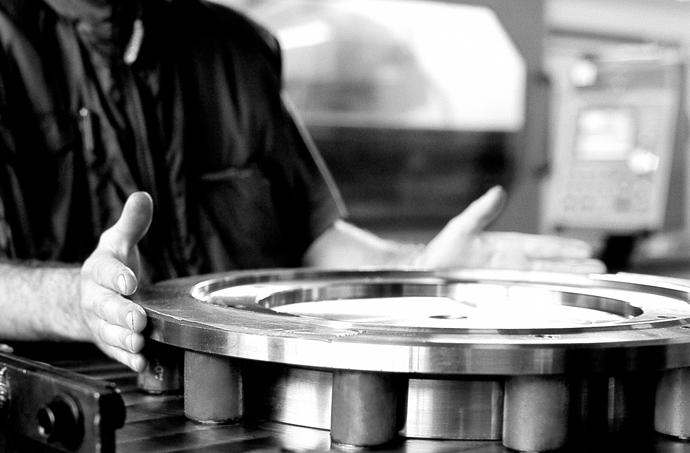Stainless steels which – beside the necessary percentage of Chromium – contain a good amount of Nickel and possibly of Molybdenum.
 GO TO THE PRODUCTS SECTION
GO TO THE PRODUCTS SECTIONALTERNATIVE NAMES
| ASTM | EN | UNS | JIS |
|---|---|---|---|
| 310S | 1.4845 | S31008 | SUS 310S |
CHEMICAL COMPOSITION
| 310S | Chemical Composition - Maximum Value | |||||||
|---|---|---|---|---|---|---|---|---|
| C | Mn | Si | Cr | Ni | P | Mo | Other | |
| 0.1 | - | 1.0 | 22-24 | 19-22 | 0.045 | 2-2.25/td> | N<0.11 | |
| Typical Value | ||||||||
| 0.08 | 0 | 0 | 22 | 20.4 | 0 | |||
MECHANICAL CHARACTERISTICS
| Tensile Strength (MPa) min | Yield Strength 0.2% Proof (MPa) min | Elongation (% in 50mm) min | Hardness | |
|---|---|---|---|---|
| Rockwell B (HR B) max | Brinell (HB) max | |||
| 520 (580) |
205 (270) |
40 | 95 | 220 |
END USES
AISI 310S steel is used when the end products must withstand very high temperatures. Thanks to extremely high Nickel and Chromium content (even higher than those in AISI 309S) this steel is highly resistant to corrosion at high temperatures, up to 1100 degrees in oxidising environments and up to 1000 degrees in highly reducing environments.
AISI 310S is austenitic steel which cannot be tempered and is characterised not to be magnetic in annealed or cold machining state. Typical applications are pipes and boxes for annealing. Boxes for nitriding gas turbine parts and reaction engines, parts for ovens with continuous passage.